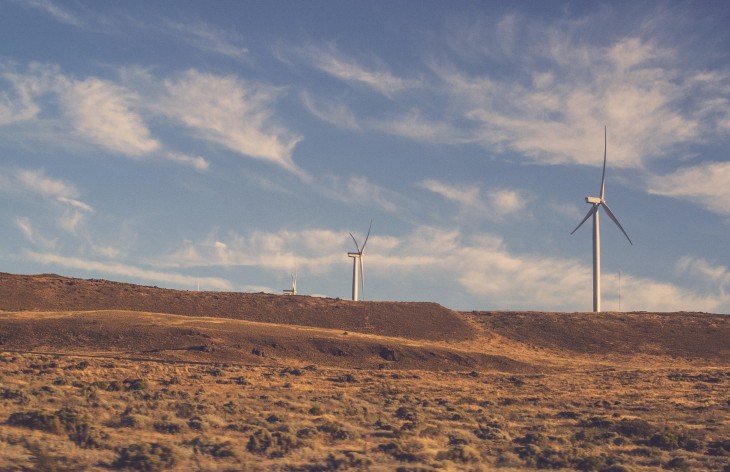**Marketers traditionally shy away from promoting a brand’s sustainability; worried that it is too expensive, complicated or risky, and that mainstream consumers won’t be interested.**
However, consumer’s attitudes are changing and we have started to become more ecologically aware and expect more from our brands. Many companies are making the move to increase sustainability in their operations anyway, so now is the time to market this.
Marketers are ignoring sustainability at their own risk. Big brands McDonalds’ and PG Tips have increased sales since marketing their sustainability, and a study published in June 2013 showed that ‘meaningful brands’ (link: http://www.environmentalleader.com/2013/06/12/feel-good-brands-outperform-stock-market/ text: outperform others on the stock market by 120%)
### **Successful Campaigns**
(link: http://www.greenbiz.com/blog/2011/12/21/how-mcdonalds-mainstreaming-sustainability text: McDonalds 2011 greener re-brand) has shown that sustainability can be done in a subtle way to appeal to the masses. They started out gradually, with LED lighting and greener packaging, intending to increase sustainability over time.
This month, the world’s biggest fast food chain has introduced pumpkin spiced lattes made from Rainforest Alliance-certified espresso, and a blue eco label from the Marine Stewardship Council on fish sandwiches.
Bob Langert, vice president of sustainability at McDonalds, points out that actually (link: http://www.theguardian.com/sustainable-business/mcdonalds-coffee-sustainability text: fish has been sustainably sourced for McDonalds for many years), but it’s only now that this is included in marketing efforts, as it has started to be something more customers care about.
Previously customers would have to dig around on McDonald’s website to find any information about sustainability efforts, but now McDonalds are using this as a plus point to build customer loyalty and trust. (link: http://www.theguardian.com/sustainable-business/mcdonalds-coffee-sustainability text: Langert said): “We feel there’s a tipping point coming. We see the consumer starting to care. Consumer expectations are rising.”
PG Tips are another big brand that has used sustainability in their marketing in a variety of ways. The company partnered up with the Waste and Resource Action Programme (WRAP) as well as Brentwood Borough Council and Chelmsford Council in 2012 for a campaign suggesting PG Tips drinkers put their used tea bags in food waste bins.
This was just part of Unilever’s attempt to (link: http://www.mccgp.co.uk/marketing-news/public-relations/unilever-launches-pg-tips-tea-bags-sustainability-campaign/1871/ text: reduce landfill by 50%) in the next eight years, by recycling tea bags instead of putting them in the main waste bins. They previously (link: http://www.rainforest-alliance.org/multimedia/pgtips-uk text: joined with The Rainforest Alliance) to make sure all their suppliers are protecting the rainforests, receiving ‘the green frog seal of approval.’
PG Tips’ light hearted approach in the ads with use of comedian Johnny Vegas and ‘monkey’ gave it a friendly edge, instead of the serious, authoritative approach usually associated with sustainability matters. It also meant that they kept it simple and stayed true to the brand, as the same characters and tone were used as in previous advertising.
### **So, how can my business embrace sustainability?**
Some companies argue that they have tried to market a sustainable product and it didn’t work. But did they take the right approach? If we look at these examples generally their mistakes were creating an inferior product, charging more for it, or marketing it in a confusing or unappealing manner.
An example of this is Nike, who launched their environmentally friendly shoe (link: http://www.sustainablebrands.com/news_and_views/communications/why-green-product-brands-fail text: ‘Considered’ in 2005). The hemp walking boot was (link: http://www.sustainablebrands.com/news_and_views/communications/why-green-product-brands-fail text: considered ugly), had a high price tag and went against Nike’s usual high-tech image. The product didn’t come across as honest, and so it failed.
To successfully launch an eco marketing campaign your company should follow these steps:
**Choose Your Wording Carefully**
If you are aiming for the mass-market consumer, avoid words like ‘green’ or ‘eco’ in your product name or marketing material. You shouldn’t stray away from your brand’s usual tone or general approach, as this will put off your current consumer base. Try using subtle language and don’t charge extra for a greener alternative product.
**Offer a Worthy Product**
Your customers want a good quality product that is just as well designed, effective and reasonably priced as the standard alternative. Don’t presume your customers will accept a lesser product because they want to save the environment; especially if you are targeting the mass market this just won’t be the case.
**Be Genuine**
This includes making sure that you are actually doing what you claim to be, and that all of your business policies are consistent with your environmentally friendly product. Your product’s marketing should also fit in with the current approach, or it won’t come across as honest.
**Engage Your Customers**
Don’t just tell your customers what you’re doing – let them know why it matters. Some may not be interested but this could appeal to more environmentally aware customers. Helping your consumers take part themselves will also make them feel more involved and part of something valuable, as we saw with PG Tips’ recycling campaign.
